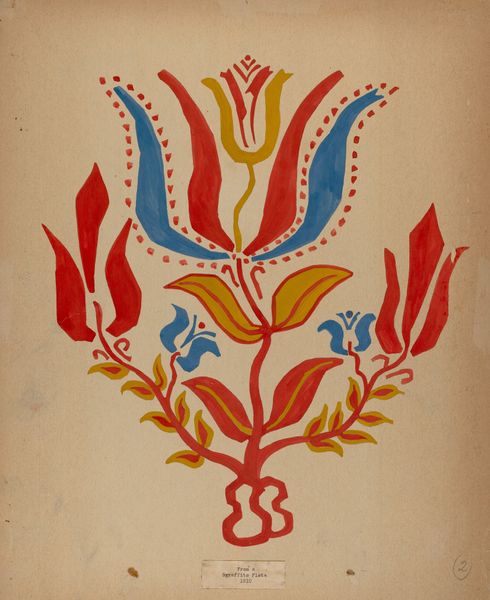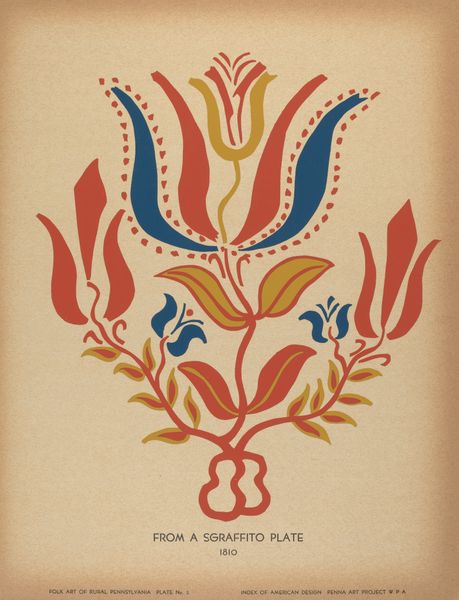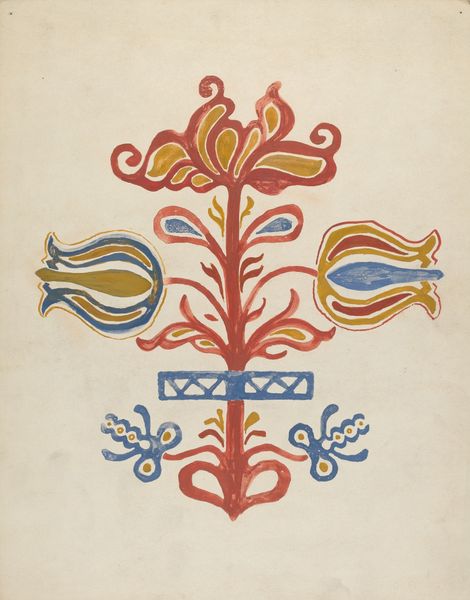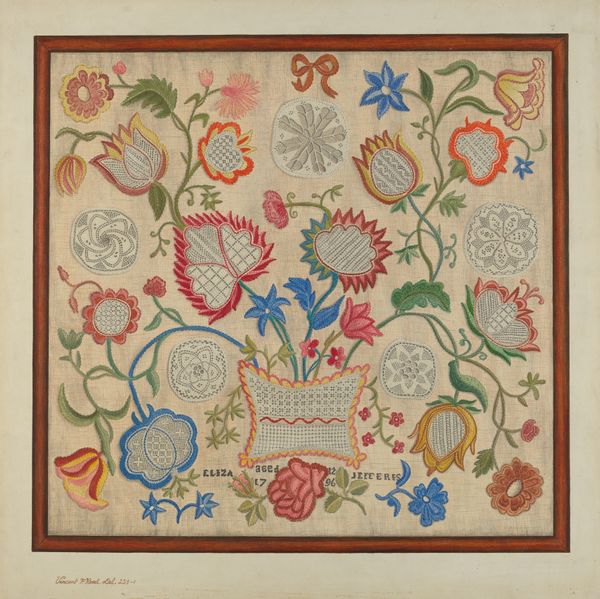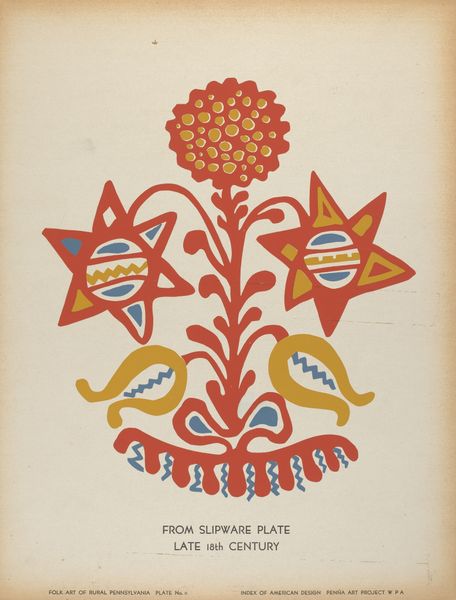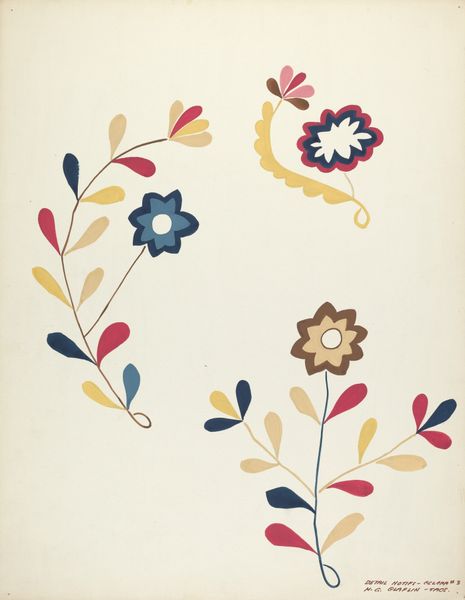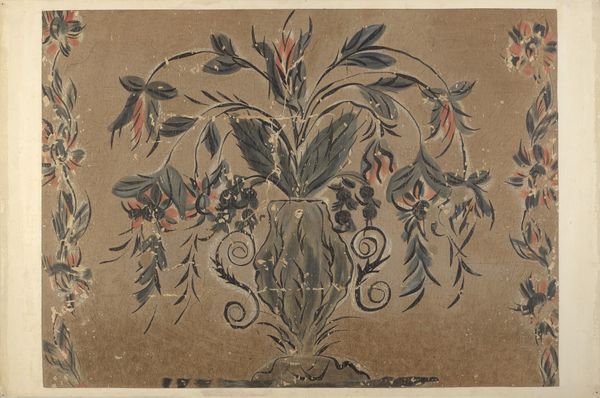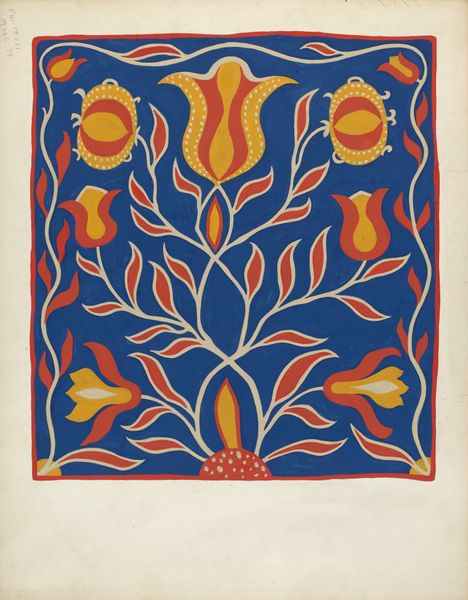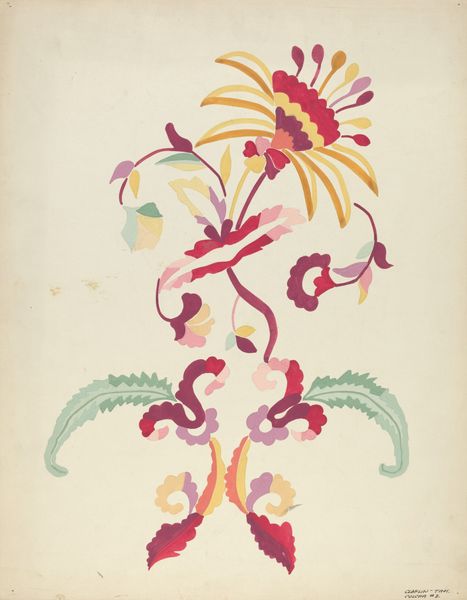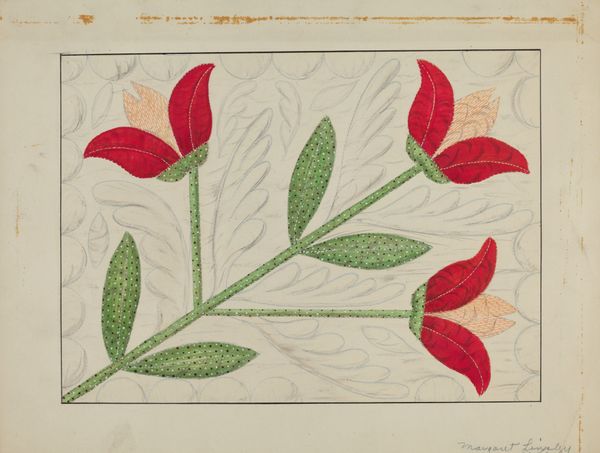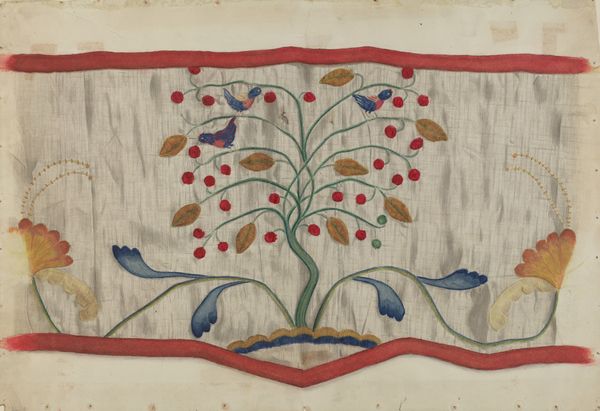
drawing, painting, fresco
#
drawing
#
painting
#
fresco
#
geometric
Dimensions: overall: 35.4 x 27.8 cm (13 15/16 x 10 15/16 in.)
Copyright: National Gallery of Art: CC0 1.0
Editor: This is "Design from Proposed Portfolio" from sometime between 1935 and 1942 by an anonymous artist. It's a drawing, maybe for a painting or even a fresco, and it features a geometric, floral design. It’s surprisingly cheerful. What do you see in this piece, especially given its historical context? Curator: The cheerful nature you noted stands out sharply against the backdrop of the late 1930s and early 1940s. Knowing that this design emerged during the Great Depression and the lead-up to World War II gives the piece a powerful charge. Do you see the potential for radical, utopian vision within this stylized rendering? Editor: Radical, how so? Curator: Think about the political role of art and design during that period, particularly within leftist movements. This stylized floral motif feels tied to folk art traditions, movements that were about claiming indigenous visual languages and symbols to deploy in the fight for economic and racial equality. Can you see how this kind of pattern could symbolize a sense of collective identity and cultural pride, especially for marginalized communities? Editor: I can see that connection. The geometry of the flowers also hints at the influence of the Bauhaus perhaps, where simple, functional designs were tied to social progress? Curator: Precisely. It suggests a belief in the power of design to improve people’s lives and perhaps transform society. Considering this piece might have been purposed for a fresco makes this message even more powerful: a bold, public artwork for all to see! Editor: So, on the surface, it seems like a simple, pleasant design, but underneath there are powerful ideas about art’s role in social and political change. Thanks for clarifying! Curator: Indeed. By viewing this through a socio-historical lens, we are invited to reconsider what may appear as commonplace or simply “decorative” as deeply entwined with complex and relevant social structures and beliefs.
Comments
No comments
Be the first to comment and join the conversation on the ultimate creative platform.

